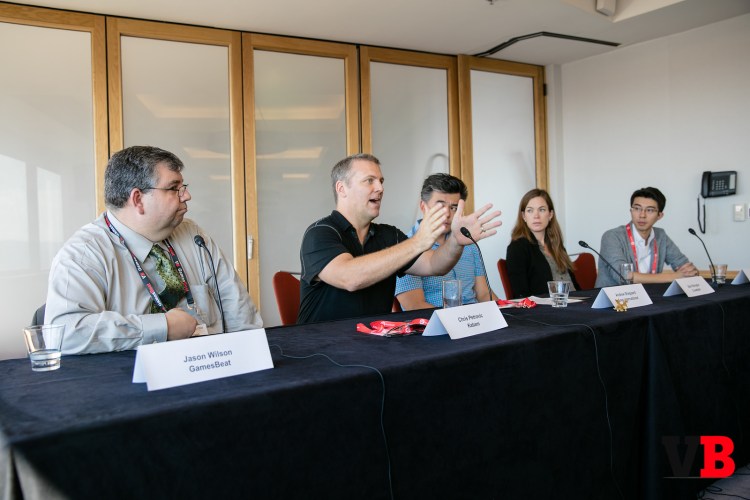It wasn’t long ago that mobile game companies could easily get a license to make branded games featuring movie or cartoon characters. But brand owners have become more sophisticated about who they partner with and what kind of game they are developing.
Four panelists at a session during GamesBeat 2015 in San Francisco spoke about how that trend requires game developers to be more strategic about how to present their game development plans.
“I think you find the champions within that organization that increasingly have more and more legitimacy,” said Chris Petrovic, Kabam’s senior vice president and head of licensing.
Petrovic said that, in the past, marketing groups were more focused on their brands’ promotional use, and they knew little about video games.
“It was clear that you were talking to somebody who didn’t understand the business,” Petrovic said.
But that has changed. For example, he said the film studio Lionsgate has several executive producers with experience making or producing games, and they ask tough questions about the quality of the game and how it fits into the brand’s image.
Petrovic said it used to be harder to explain level designs and platform specifications to partners that knew little to nothing about video games, but companies now understand what video game developers need in order to deliver a genuinely great product.
Mobile social game developer Storm8 said it has found success winning brand licenses by being more strategic in its planning and spending time matching the brand-based game with the appropriate gamer audience.
“When you work with a brand obviously … you want to be respectful of the brand,” said Perry Tam, the CEO and cofounder of Storm 8, adding that his team tries to make sure that the game content is consistent with the brand.
Tam added it’s also important to structure a deal and set expectations so both sides are clear on what the deal covers. He said he tries to give companies a list of who will be working on the project, how it will be operated on and what the turnaround time would be.
Despite the growing challenges of winning brand licenses, Blair Ethington, the senior vice president of brands and marketing for CrowdStar, said it was still worth the effort to partner with a brand if you can find one with a unique sense of style that is capable of reaching a wide range of audiences.
CrowdStar has licenses with 160 different brands and is a global leader in mobile and social gaming developing entertainment for women. They recently introduced the Covet Fashion app, which gives people the ability to create styles from head-to-toe with actual clothing brands.
“We do want to be particular with who we work with,” Ethington said.
The group also said that sometimes “brand slapping,” the practice of taking a well-known game genre and applying a brand on top of it, can contribute to a product’s success.
Gree chief operating officer Andrew Sheppard said brand slapping gave the mobile phone controlled gadget Sphero a much-needed boost. The app-enabled robotic ball was upgraded to look like BB-8 from Star Wars VIII: The Force Awakens.
“It was a ball that roved around without a head and they didn’t sell enough of them. They found out, ‘Hey, there’s this Star Wars character coming out. It looks exactly like Sphero,’” Sheppard said.
Sheppard said not everyone agrees with the strategy of putting a Hollywood brand on a product to sell products, but “if you can do it, then you should do it.”
VentureBeat's mission is to be a digital town square for technical decision-makers to gain knowledge about transformative enterprise technology and transact. Learn More

